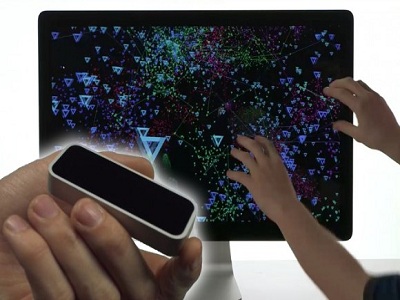Leap Motion Software Comes With New Privacy Policy And Features
Leap Motion released version 2.3 of both the Leap software development kit and the consumer runtime software needed to operate the device. Both pieces of software are available now and come with an updated privacy policy that will go into effect on August 15.
Privacy Policy
The new policy gives Leap Motion permission to record hand-tracking data and send it back to a server that Leap operates. The company has stated that no identifying information will be recorded along with the image data. Not even the ID of the device will be tracked. Leap intends to use the information it receives to improve hand tracking in future releases of the Leap Motion software. By default, data will be sent back to Leap, though it can be disabled in the options by unchecking "Send Usage Data."
Due to community feedback regarding poor tracking resulting from low frame rates (something I've encountered myself), Leap has integrated a feature called Avoid Poor Performance that pauses tracking when low frame rates are detected. It will then give guidance as to how to correct this issue. Leap generally attributes this problem to USB congestion, and has instructions on how to reconfigure your setup to avoid this problem.
Along with the performance detection feature, Leap Motion has fixed a bug where apps would hang when using the Image API, and for those using HP hardware, a fix has been issued that corrects a problem with firmware updates not triggering correctly. Leap said that version 2.3 offers better accuracy under Robust mode, and it managed to slightly decrease the CPU usage from the Leap software.
Known Issues
With every software update there are bound to be a number of issues, and this one is no exception. Leap Motion has made two lists of know problems. The first list covers general use of the Leap motion, while the second list is focused on VR issues.
The problems with general usage include issues with the manual interaction height setting. Leap suggested setting it to automatic, positioning your hand and the desired height and then switching back to manual as a work-around. Pausing and resuming tracking on the device can result in frame rate loss. To get it to work properly again, the fix for now is to disconnect and reconnect the Leap Motion tracker.
Leap Motion is aware of some issues that don't have workarounds yet. Making a fist and extending one finger, for example, lowers the tracking quality, but Leap has no suggestions to correct this. Leap also noted that tracking doesn't seem to work as well when wearing jewelry such as bracelets and rings. There's a longer list that you can examine if you'd like to know more.
Get Tom's Hardware's best news and in-depth reviews, straight to your inbox.
Leap Motion has also listed a number of known issues when using the device in virtual reality. Developers using the Image API will need to ensure that applications are updated to use the DLL files from SDK 2.1.2 but strongly recommended upgrading to at least 2.2.0 to improve performance. The company also noted that the USB port on the Oculus Rift DK2 does not provide enough bandwidth, and urged everyone to use the free extension cable that comes with the mounting kit.
Leap has also determined that tracking fully extended arms that aren't bent at the elbow doesn't work very well, and suggested keeping hands closer to your face. Another situation that can cause tracking problems is if an infrared reflective surface is located too close, such as a white wall or mirror.
Both the software development kit and the consumer runtime are available from Leap Motion's website now. The privacy policy changes go into effect on Saturday, August 15.
Follow Kevin Carbotte @pumcypuhoy. Follow us @tomshardware, on Facebook and on Google+.
Kevin Carbotte is a contributing writer for Tom's Hardware who primarily covers VR and AR hardware. He has been writing for us for more than four years.
